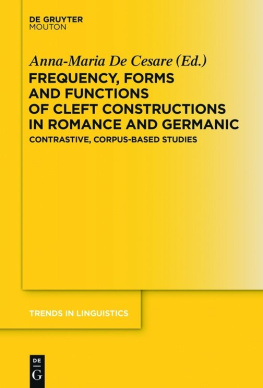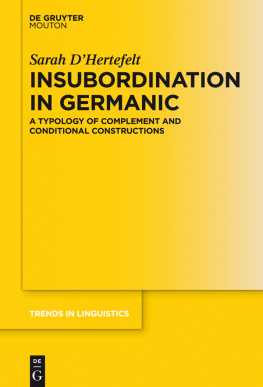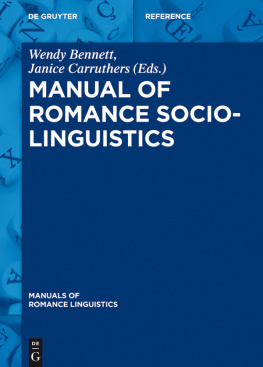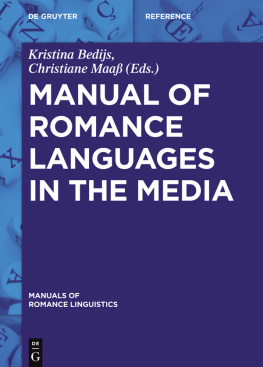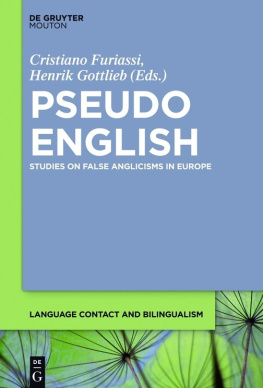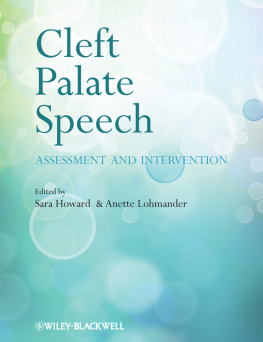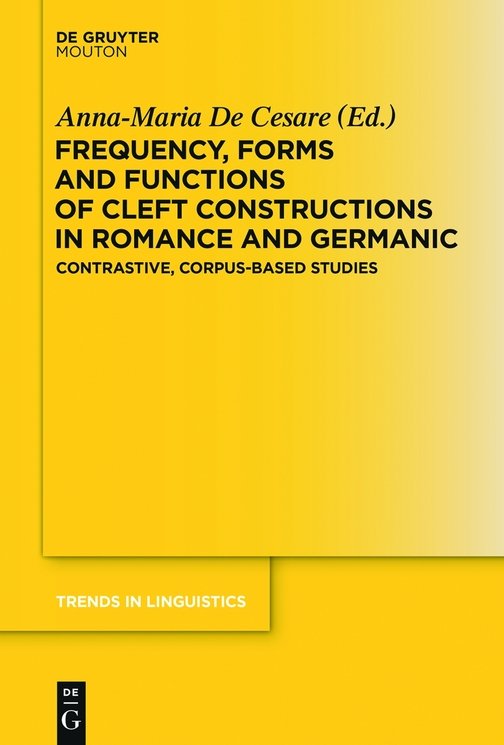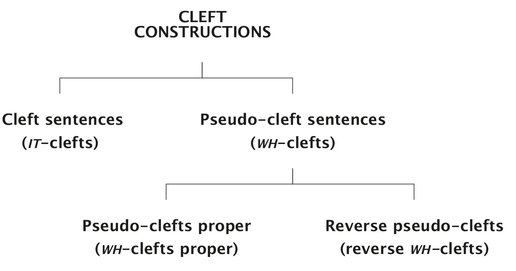2.1.1 From English to other languages
i.e. by what in (5a), or by who (5b), when (5c), why (5d), where (5e) and how (5f); according to Collins (1991: 27), a Pseudo-cleft can also be opened by which .
In German, the situation is very similar to English, as the class of Cleft sentences is introduced by the pronoun es it and the class of Pseudo-clefts by a free relative pronoun (by the form was what, wer who, wo where, etc.; on these forms, see Gast and Levshina in this volume):
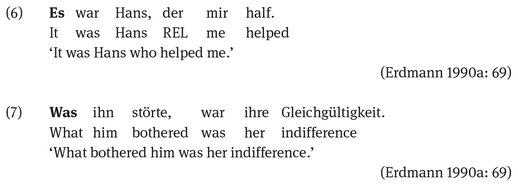
In the Romance languages, the picture is somewhat different. Although Clefts and Pseudo-clefts are of course also identified as two stable Cleft constructions classes in Italian, French and Spanish, the forms that introduce them do not necessarily coincide with an empty pronoun and a free relative pronoun, respectively. In French, a parallel to English clefts can be drawn only for the category of Cleft sentences: French Cleft sentences are opened by the pronoun ce it, as in (8), while Pseudo-clefts can theoretically be opened by a free relative pronoun such as qui who (9), o where (10), comment how (11), pourquoi why (12), quand when (13) (cf. Roubaud 2000 for authentic examples taken mainly from spoken registers), but start most of the time with the complex pronoun ce qui what (for quantitative data related to a corpus of electronic news, see De Cesare et al. in this volume and Baranzini in this volume):


In Italian and Spanish, a parallel to English is even more far-reaching. As we already said, in these two languages, Cleft Sentences are not opened by any form of pronoun and the situation regarding the class of Pseudo-clefts is similar to French: Pseudo-clefts can be introduced either by a free relative pronoun (It. chi who, Sp. quien who; note that there is no Romance equivalent to the widespread E. what ) or and this is the preferred option (cf. De Cesare et al. in this volume) by a relative headed by another pronoun (cf. It. quello che what, Sp. lo que what, etc.). Here are some representative examples of clefts and Pseudo-clefts in Italian and Spanish, respectively:
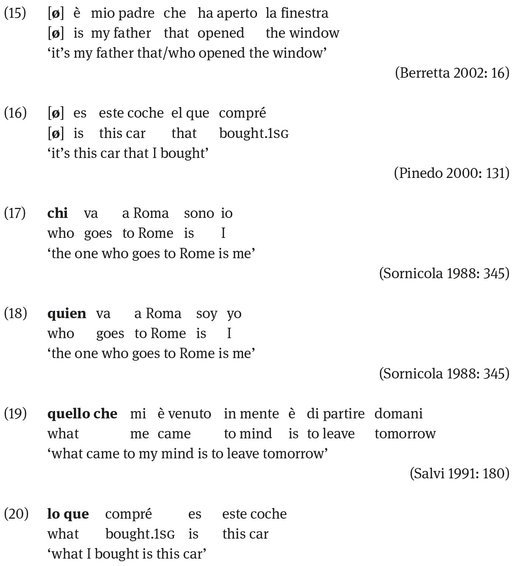
In light of these cross-linguistic grammatical differences, we consider that it is better to avoid using the labels IT -cleft and WH -cleft in the description of the languages that differ from English (e.g. Italian, French, and Spanish) because these labels are not transparent (either) and therefore their use is relatively counterintuitive. The label IT -cleft is not appropriate for pro-drop languages such as Italian and Spanish, because these languages are not opened by any form of pronoun. In our view, stating, as Lambrecht (2001) does, that the matrix subject of an IT -cleft coincides with an inflectional morpheme in Italian and Spanish (p. 464) demands to stretch the notion of matrix subject as well as the label IT -clefts to a point where they no longer seem operational. In turn, the label WH -cleft is problematic because in the case of the Romance languages it is also supposed to refer to constructions that are not opened by a wh- word (i.e., by a free relative pronoun of the form chi / qui / quien who or dove / o / donde where etc. in Italian, French and Spanish, respectively) but by a complex pronoun, such as It. quello che , Fr. ce que , Sp. lo que what. Using the other set of labels i.e., Cleft sentence, Pseudo-cleft sentence and Reverse pseudo-cleft sentence is not unproblematic either. Besides their lack of transparency and the fact that, for some, the two last terms misguidedly lead to the view that the syntactic structures to which they refer are not real clefts, they cover syntactic forms that differ quite a bit from one language to another (a fact that is also true for the alternative set of labels).

